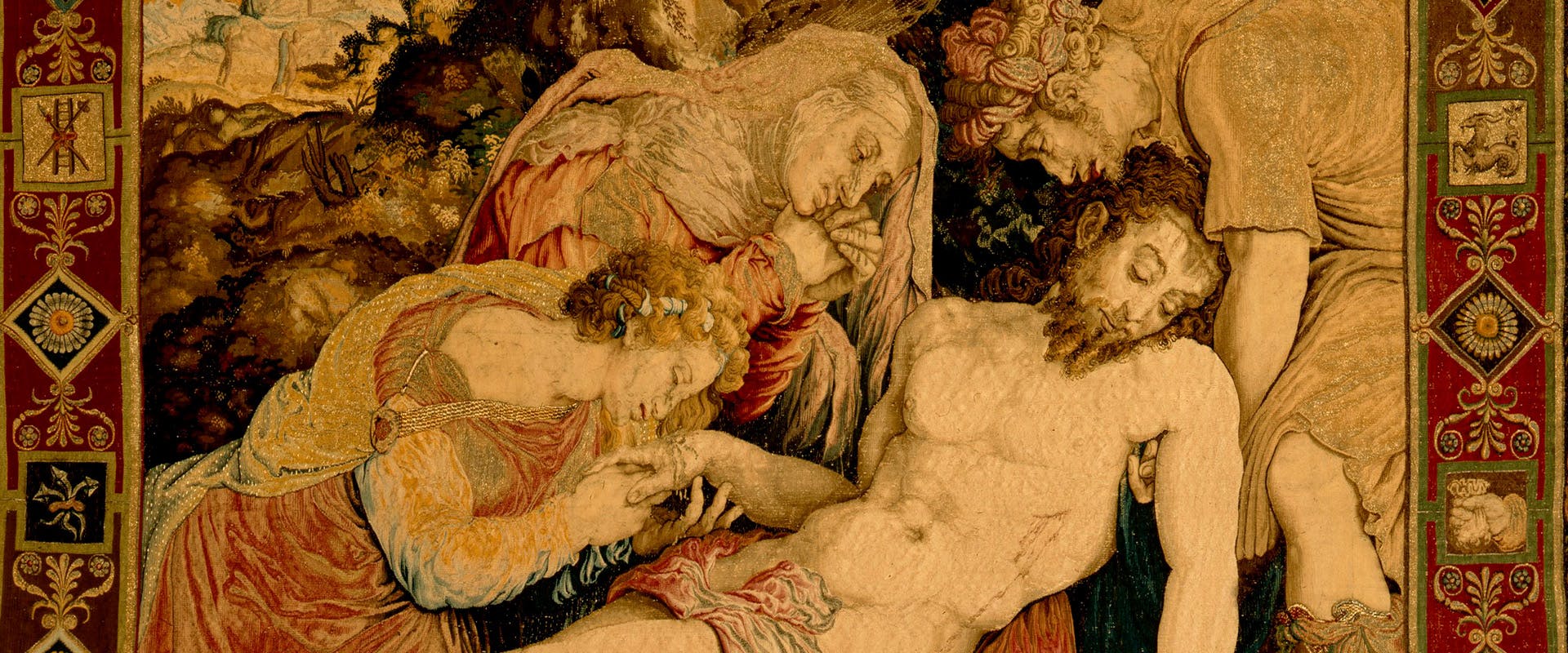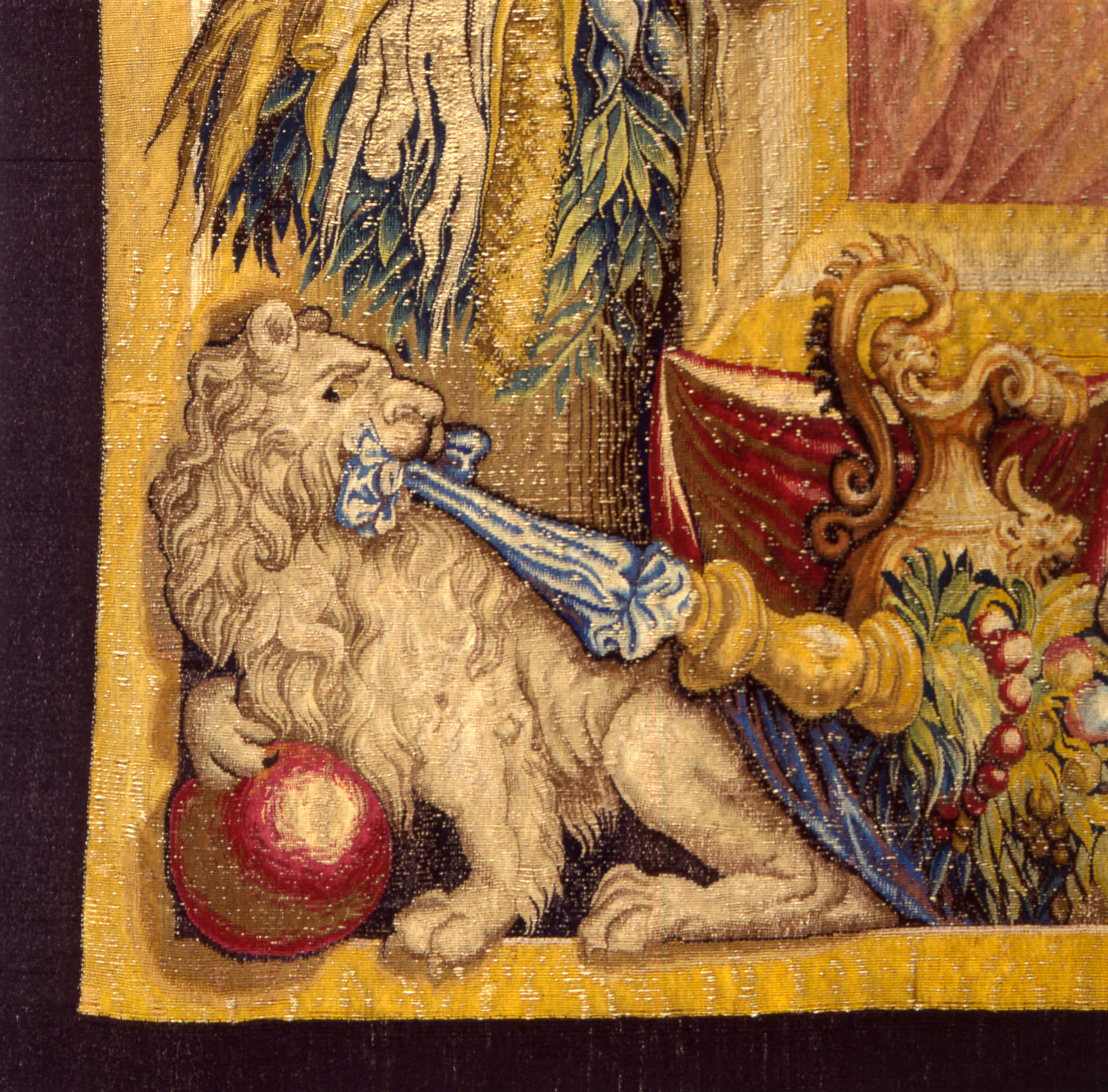The tapestry gallery. The fragility of beauty
A small but precious exhibition which highlights the elegance and the value of the tapestry collection
Up until 1987, tapestries used to hang along the corridors of the Gallery, but they started being removed the same year and kept in the repositories where they could be protected from the damage caused by light and tensile stress.
The exhibition held at the Reali Poste illustrates the various types of intervention made on the tapestries on display.
The large tapestry portraying “The despoiling of the bodies after the Battle of Cannae” is part of the series of scenes from the Life of Hannibal, which was woven around the mid-16th century by the weaver Cornelis de Ronde, now divided between the Uffizi (three tapestries) and the Bavarian National Museum in Munich (six tapestries).
The restoration carried out on the tapestry by the textile workshop of Opera now allows us to appreciate the composition as a whole and the exuberance of the decorative details, enhanced by the use of virtuoso techniques in the weaving. The richness of details and the overall composition are underscored by the extensive use of gold threads.
The Ecce Homo and the Resurrection had already been restored in the 1990s. These precious devotional pieces were executed for the Medici, manufactured by the Flemish tapestry weaver Nicola Karcher, based on the cartoons by Francesco Salviati. They are now being displayed after a further operation by the textile workshop of the Opificio delle Pietre Dure, which has considerably improved the rendering of colours in the missing parts.
Finally, after a demanding operation carried out again by the textile workshop of the Opificio delle Pietre Dure aimed at stabilising the precarious state of conservation so that it could be displayed to the public once again, we can now also admire the extremely fragile tapestry woven completely in silk by Giovanni Rost in 1553, portraying December, January and February from the series of the Months.
The presentation of these restoration processes is conceived as a contribution to unveiling the precious wealth of this collection and to emphasise the potential that a correct restoration and good conservation can have in perpetuating the beauty of these stunning works of art.

